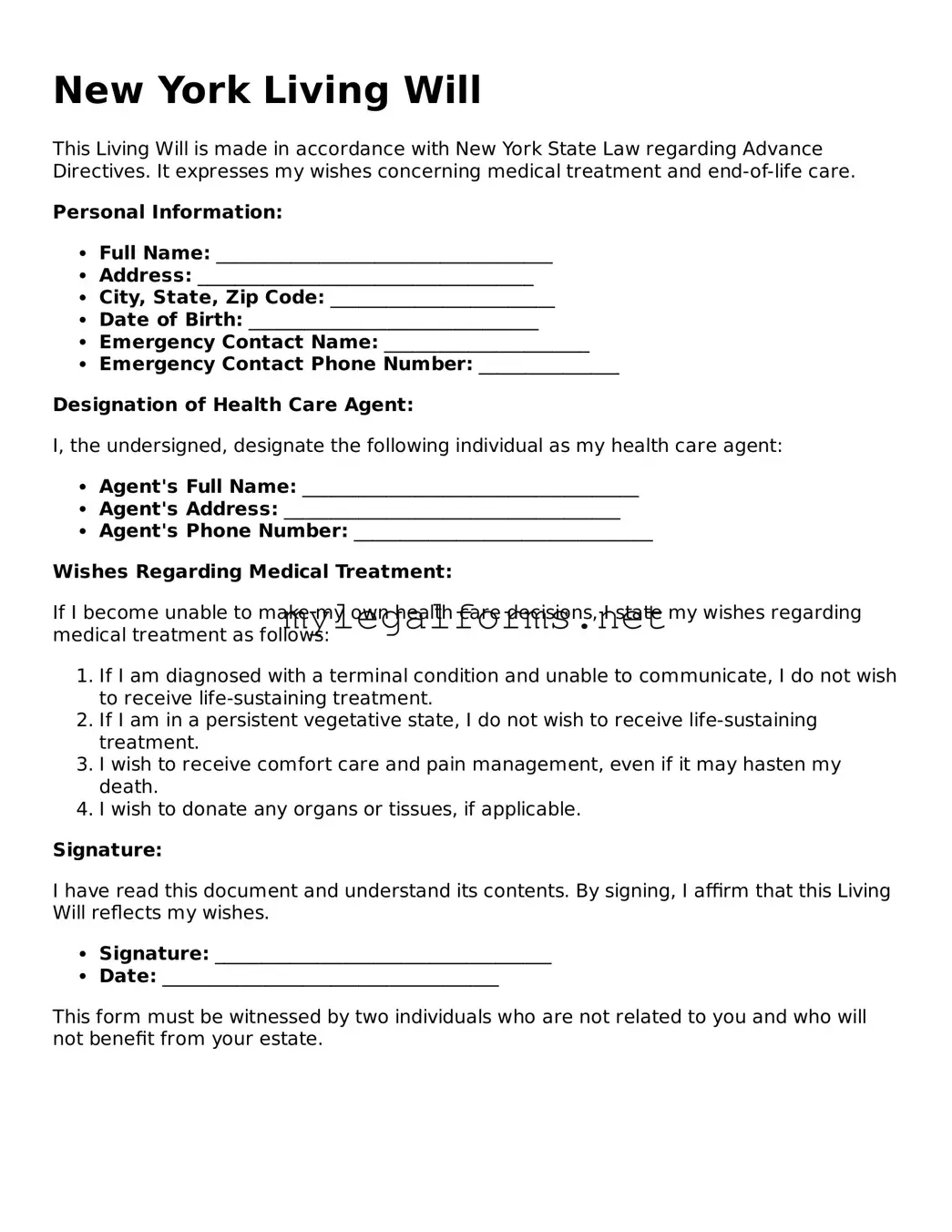New York Living Will
This Living Will is made in accordance with New York State Law regarding Advance Directives. It expresses my wishes concerning medical treatment and end-of-life care.
Personal Information:
- Full Name: ____________________________________
- Address: ____________________________________
- City, State, Zip Code: ________________________
- Date of Birth: _______________________________
- Emergency Contact Name: ______________________
- Emergency Contact Phone Number: _______________
Designation of Health Care Agent:
I, the undersigned, designate the following individual as my health care agent:
- Agent's Full Name: ____________________________________
- Agent's Address: ____________________________________
- Agent's Phone Number: ________________________________
Wishes Regarding Medical Treatment:
If I become unable to make my own health care decisions, I state my wishes regarding medical treatment as follows:
- If I am diagnosed with a terminal condition and unable to communicate, I do not wish to receive life-sustaining treatment.
- If I am in a persistent vegetative state, I do not wish to receive life-sustaining treatment.
- I wish to receive comfort care and pain management, even if it may hasten my death.
- I wish to donate any organs or tissues, if applicable.
Signature:
I have read this document and understand its contents. By signing, I affirm that this Living Will reflects my wishes.
- Signature: ____________________________________
- Date: ____________________________________
This form must be witnessed by two individuals who are not related to you and who will not benefit from your estate.
